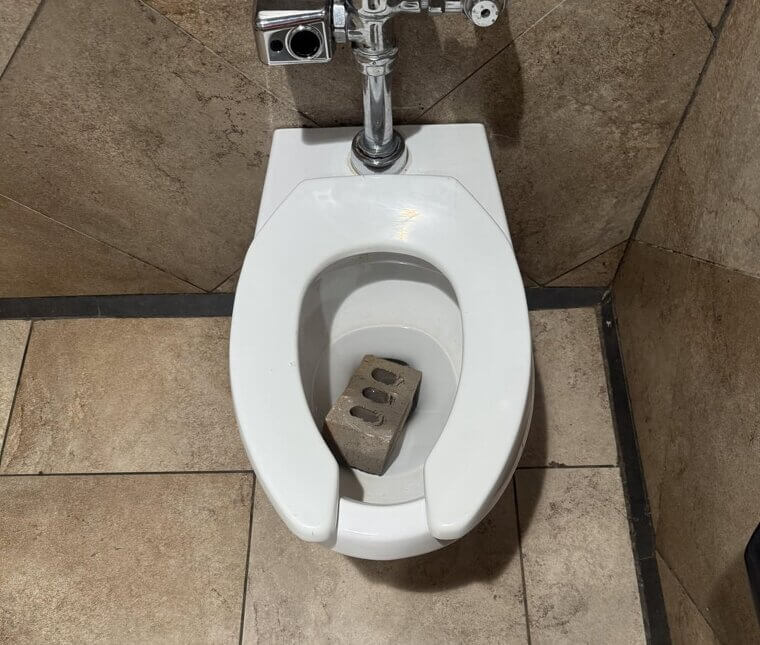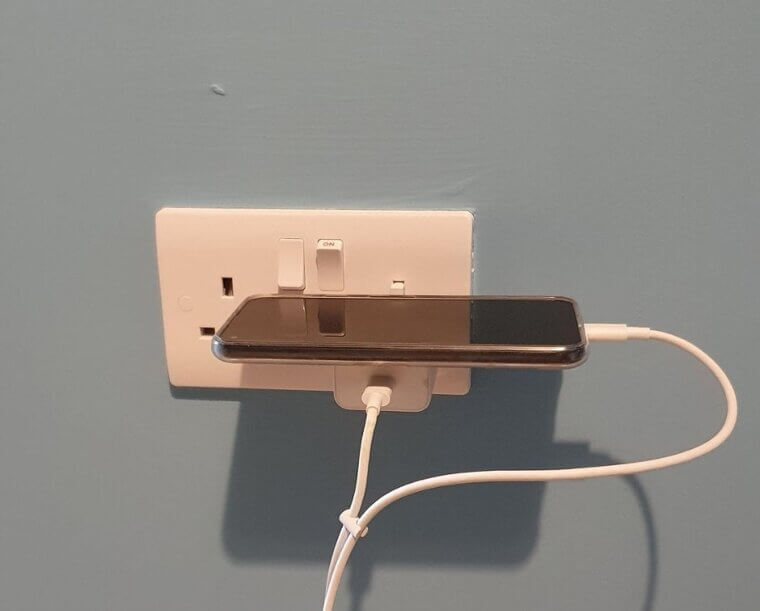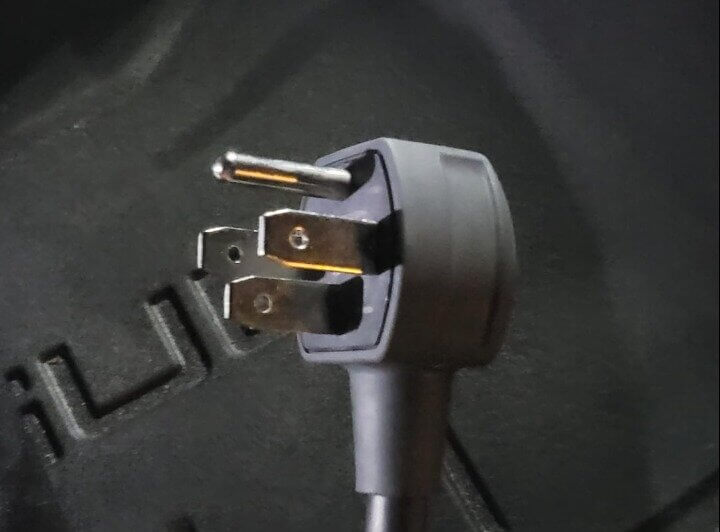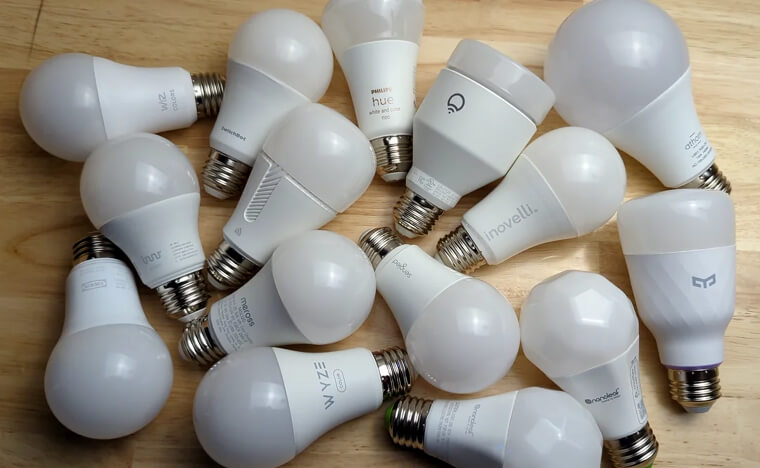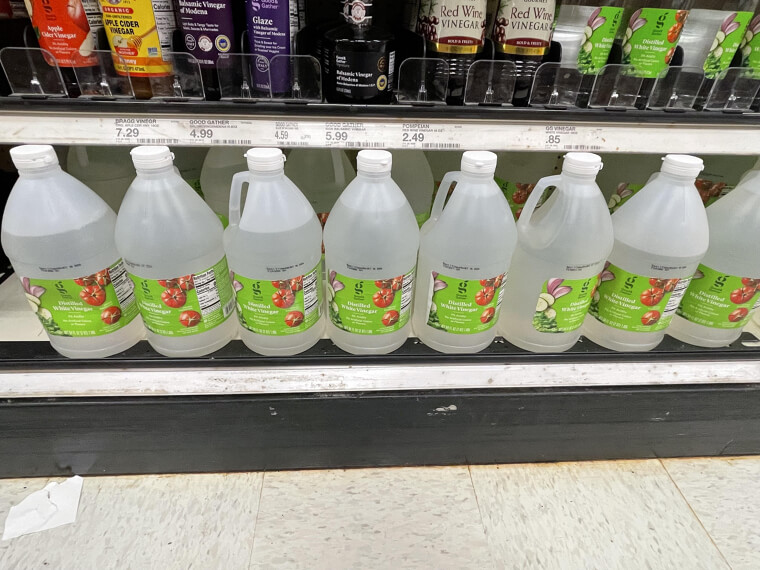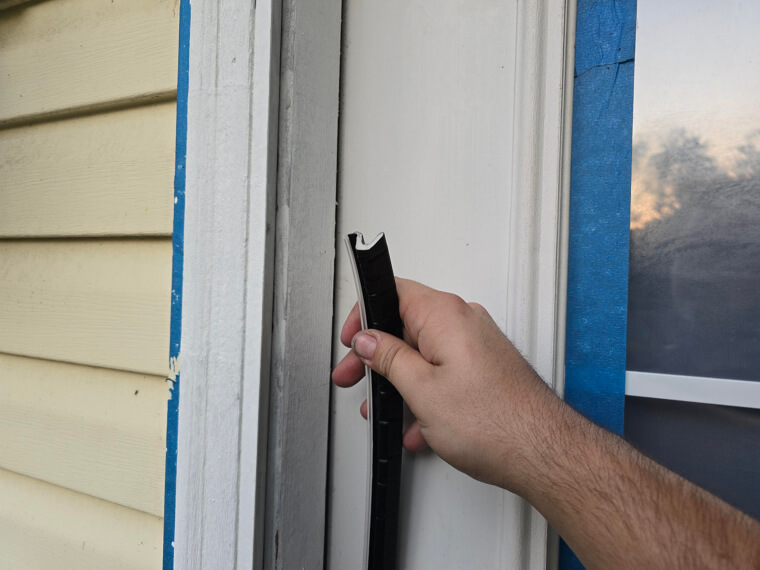Putting Bricks or Bottles in Your Toilet Tank
This old school trick promises to reduce water use by displacing space in the toilet tank. While it technically reduces the amount of water per flush, it often weakens the flush so much that you need to flush twice. That instantly eliminates any savings. Worse, bricks can crumble and damage the tank. Even sealed bottles can shift and interfere with moving parts. Modern toilets are already designed to use minimal water, and tampering often makes them less effective. Some DIY enthusiasts love this hack because it feels clever and costs nothing, but it belongs in the same category as balancing chairs on two legs: easy, but not smart. The real solution is upgrading to a properly rated low flush toilet rather than improvising with bricks.
Putting Foil Behind Your Radiators
Many DIY enthusiasts swear by slipping shiny foil behind radiators to reflect heat back into the room. It sounds clever, but in most modern homes it does almost nothing. Radiators heat air, not walls, and the warm air circulates regardless of what is behind the unit. Unless you live in a drafty stone cottage built before your grandparents were born, the heat loss through a finished wall is already minimal. Foil often ends up wrinkled, dusty, or falling behind the baseboard, turning your project into a mildly annoying mess rather than an energy saver. It also does not improve heat distribution or reduce fuel consumption in any noticeable way. The real efficiency comes from bleeding radiators, sealing drafts, and using proper insulation. Foil is cheap and makes you feel productive, but the savings stay firmly at zero.
Closing Vents in Unused Rooms
This tip sounds logical. If you close vents in rooms you rarely use, your heating or cooling system should work less. The problem is that central HVAC systems rely on balanced airflow. Closing vents raises pressure in the ducts, which forces the system to work harder. That extra strain can shorten the lifespan of your blower motor and increase energy use instead of reducing it. Air still tries to move through the blocked duct, and your system compensates by running longer. Some homeowners even create noisy whistles or rattles when airflow is restricted. Instead of saving money, you end up heating the house unevenly and potentially damaging equipment. If you want targeted climate control, zoning systems or smart thermostats help. Closing vents simply tricks you into thinking you did something helpful while your utility bill quietly climbs.
Charging Electronics Only at Night
Many people believe that charging phones or laptops overnight reduces energy use because electricity is supposedly cheaper or less burdensome at night. In most homes, this is not true. Residential rates often stay the same all day, and the devices themselves draw very little power. The bigger concern is that leaving electronics plugged in for long overnight cycles wastes electricity due to trickle charging and standby power. It also wears down batteries faster, which leads to replacing devices sooner, adding to long term costs. The energy draw of a modern charger is tiny, but the myth that nighttime charging is somehow efficient continues. The real savings come from unplugging chargers when they are not in use and limiting charge time to what your device needs. Overnight charging saves you nothing and shortens the life of your gadgets.
Painting Your Roof White to Keep the House Cool
Painting the entire roof white has become a popular DIY idea for homeowners who hear about reflective roofs in warm climates. While reflective roofing systems do exist, simply rolling white paint over asphalt shingles does not produce the same effect. The paint does not adhere well, it can damage the shingles, and the reflective benefit is minimal. In some climates, it can even trap moisture and shorten the lifespan of the roof. True reflective roofing requires specialized materials, not a weekend paint job. Many homeowners spend time and money coating their shingles, only to see no change in cooling bills. The better approach is improving attic ventilation, adding insulation, or shading windows. White roof paint sounds clever and dramatic, but the savings are almost nonexistent and the risks are real.
Unplugging Every Device Every Night
This tip feels satisfying because you can see the results of your effort. Unfortunately, modern appliances use tiny amounts of standby power, and unplugging them daily offers only pennies of savings per month. Some devices also lose settings, require reprogramming, or suffer wear on plugs from constant removal. Meanwhile, larger energy drains like poor insulation, old windows, or inefficient HVAC systems go untouched. DIY fans often enjoy the ritual of unplugging, thinking it is a bold efficiency move. In reality, it is like sweeping crumbs while ignoring the spilled bag of flour. If you want real impact, identify the few true power hogs such as old televisions, gaming consoles, or basement dehumidifiers. Unplugging every lamp, clock, and toaster just drains your motivation, not your electric bill.
Replacing Lights With Expensive Smart Bulbs for Efficiency
Smart bulbs offer convenience and fun features, but they do not save meaningful energy compared to regular LED bulbs. In fact, they often use more power in standby mode to stay connected to your home network. DIYers love the idea of controlling lights remotely and scheduling them to turn off automatically, but the savings come from the LED technology, not the smart features. A basic LED bulb uses the same amount of power without costing several times more. Many people buy smart bulbs thinking they will slash their energy bills. Instead, they end up with a home full of expensive gadgets that consume a tiny bit of energy at all times. The cool factor is real, but the savings are not. If efficiency is your goal, stick with simple LEDs and invest elsewhere.
Using Vinegar in Place of Real Cleaning or Maintenance Products
Vinegar cleans many surfaces, but it does not replace specialized cleaners, filters, or maintenance products for appliances. Some homeowners pour vinegar into dishwashers or washing machines thinking it will clean the system and save money. Instead, it can corrode rubber parts and damage seals. Others use vinegar to clean HVAC vents, believing it improves energy efficiency, but it does nothing to improve airflow or reduce mechanical wear. DIY fans often love vinegar because it is cheap and feels natural. But it rarely improves efficiency and sometimes causes long term damage that leads to expensive repairs. Vinegar is great for windows and countertops. It is not a magic solution for complex equipment.
Using Space Heaters to Warm One Room
Many people believe that turning off the furnace and using space heaters saves money. In most homes, it does not. Space heaters use a lot of electricity, often more than people realize, and can increase your bill quickly. They also create uneven temperature zones, forcing you to move heaters around or run multiple units. The only time this method saves money is in very small spaces or when you truly heat only one room consistently. Most households end up heating multiple areas anyway, which eliminates the savings. DIYers sometimes enjoy the hands on feeling of directing heat exactly where they want it. In practice, the furnace is usually more efficient at whole home heating. Space heaters offer comfort, but not the savings many people expect.
Weatherstripping Everything Without Checking the Real Issue
Weatherstripping is helpful, but it is not a cure all. Many homeowners slap weatherstripping on every window and door hoping to cut drafts dramatically. Sometimes it works. Often it does not. Drafts can come from attic leaks, uninsulated walls, poor sealing around outlets, or gaps around chimneys. When the true source of air leakage is deeper in the structure, weatherstripping the windows does nothing. DIYers love quick fixes because they feel productive and inexpensive. But if you do not locate the actual leak, you end up sealing the wrong spots and saving no energy at all. The better approach is performing a simple home air test or consulting a blower door test. Weatherstripping is great when targeted correctly. When used blindly, it wastes time more than it saves heat.

